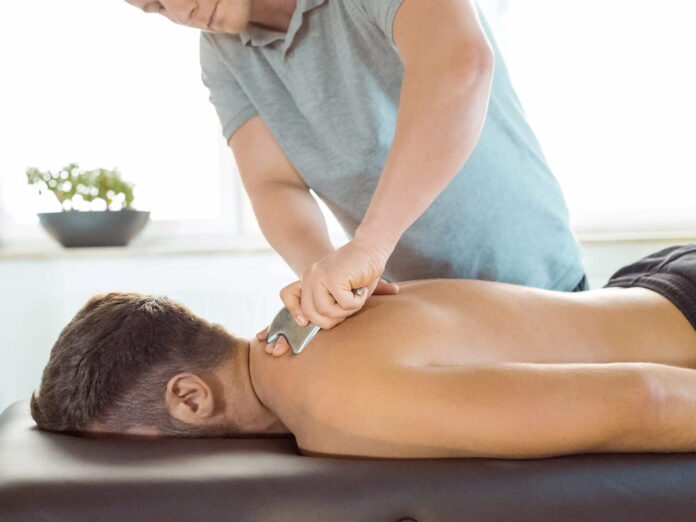Setting the Stage: Precision Bodywork for Athletic Demands
High-level training is not gentle. It grinds muscle fibers, tests tendon resilience, and locks connective tissue into microscopic knots. The wear is specific, not general, which is why one-size-fits-all relaxation rubdowns barely scratch the surface. Athletes need work that hunts down structural tension with purpose, not a half-hearted glide across the skin. Precision bodywork approaches each muscle group like a tactician surveying a battlefield. Every stroke is calculated, every angle intentional. Instead of chasing vague “feel-good” sensations, the goal is to restore performance capacity by addressing the damage where it actually lives. Anything less is wasted effort.
Understanding the St. George Approach to Deep Tissue Release
The St. George methodology is built on accuracy. Practitioners map pressure points like engineers charting stress loads, then employ slow, deliberate strokes that engage deep layers without reckless force. They target neuromuscular junctions to reset ingrained tension patterns. This is nothing like the featherlight spa routines designed for temporary calm. St. George-trained professionals undergo rigorous skill development, mastering the difference between productive discomfort and needless strain. Certification is more than a formality. It signals a standard of control and anatomical precision that casual training cannot replicate, which is exactly why these results hold up under the demands of elite athletic schedules.
Target Zones: Identifying Common Athletic Tension Points
Quads, hamstrings, calves, hip flexors, and lower back muscles form the usual suspects in chronic athletic tension. Runners lock up their calves and hamstrings until stride length shrinks. Lifters compress their lower backs and hip flexors until every squat feels heavier than it should. Cyclists battle quads that seem cast from concrete. Fascia wraps these areas like shrink film, robbing them of range and power. Simple awareness is the first filter. Tightness that persists after a warm-up, soreness that lingers beyond recovery time, or movements that feel oddly restricted are red flags. When they surface, it is time for targeted intervention.
Timing Matters: When to Schedule Bodywork Sessions
Session timing is strategy. Pre-workout activation turns sluggish muscles into responsive ones. Immediate post-training work can shorten soreness duration and kickstart nutrient delivery through increased circulation. Off-day restorative sessions rebuild structural balance before micro-irritations evolve into chronic pain. The logic is straight physiology: manage inflammation, encourage repair, and keep the nervous system from locking into a defensive crouch. Frequency should scale with workload. High-intensity cycles may demand weekly precision work, while lighter training blocks can maintain gains with less frequent appointments. Treat timing as part of your training plan, not an afterthought.
Amplifying Flexibility: Complementary Techniques and Tools
Athletes looking to extend the benefits of precision bodywork should integrate smart at-home practices. Foam rolling, when done slowly and in small ranges, can coax stubborn fascia into releasing without grinding away at tissue. A percussion device, kept at low to moderate intensity, can flush tension from quads or calves without risking overwork. Dynamic stretching before training primes joints and tissues for load. None of these replace skilled hands, but they can keep the body from reverting to baseline dysfunction between appointments. The key is subtlety and control, not brute force.
Physiology in Action: How St. George Bodywork Speeds Repair
Quality manual intervention changes biology in real time. It pulls nutrient-rich blood into damaged sites, drives lymphatic fluid out of swollen tissue, and reduces overactive nerve signaling that locks muscles into defensive contraction. Research in musculoskeletal therapy has linked such work to lower inflammatory markers and accelerated muscle fiber repair following intense effort. This is not placebo comfort. Faster fluid exchange and recalibrated neural input mean athletes can resume high-output training sooner without compounding microtrauma into lasting injury. The outcome is efficiency in recovery and a body primed for the next workload rather than limping toward it.
DIY vs. Professional: Balancing Self-Release and Expert Care
Self-myofascial release tools are accessible, inexpensive, and useful for maintaining general tissue mobility. They shine in daily upkeep but cannot match the precision of a seasoned practitioner targeting layered dysfunction. Expert care offers refined pressure control, anatomical insight, and safety in handling vulnerable structures. Book a session when pain disrupts movement quality, when repeated self-work stops yielding progress, or when preparing for peak performance events. Choosing between DIY and professional intervention should be a calculated decision rooted in performance demands, not convenience alone.
Connecting to Specialized Support
Credentials matter. A practitioner should understand biomechanics, injury history, and sport-specific load before laying a hand on a client. For athletes seeking pinpoint relief, consider a St George massage to target stubborn tension. Vet your choice thoroughly, looking for verified training backgrounds and consistent results with performance-driven clients. In skilled hands, this type of session becomes a tactical advantage rather than a generic service.
Elevating Long-Term Performance Through Consistent Care
Sporadic, reactionary work is a patch job. Consistent, targeted bodywork is infrastructure maintenance for the human machine. Over time, it unlocks stubborn movement patterns, reinforces flexibility, and keeps connective tissue pliable under load. Mental sharpness benefits too, since a body free of binding tension leaves more bandwidth for tactical decision-making and focus. Pair these sessions with disciplined nutrition, dependable sleep, and intelligent cross-training, and you create a recovery ecosystem that can handle years of high-output demand. The real payoff is sustainability. It is not about surviving the next race or season. It is about building a system that can thrive for decades.
Did you find this helpful? Check out our other helpful articles on our website.
Read Also
- Ketamine-Assisted Therapies: Impacts on Employee WellbeingWorkplace stress is common today. Many employees feel tired, anxious, or burned out. Regular therapy can help, but some people need more support. Ketamine-assisted therapy is showing good results for mental health. A ketamine-assisted therapist guides each session safely. This therapy can improve mood, focus, and energy. Learning more about it can help teams stay… Read more: Ketamine-Assisted Therapies: Impacts on Employee Wellbeing
- The Future of Men’s Health: Why Telehealth Is Here to StayTelehealth isn’t just a pandemic trend that faded into the background. For Australian men, it has become one of the most practical, time-saving, and stress-free ways to manage everyday health — and it’s shaping the future of how we access care. Platforms like DOCTO, an Australian online doctor and specialist telehealth service, are leading the… Read more: The Future of Men’s Health: Why Telehealth Is Here to Stay
- How to Build a Simple, Clean Skincare Routine ?You don’t need a complicated skincare routine. It doesn’t have to be something that requires twenty different products and confusing steps. Your routine works well with just a few high-quality clean ingredients. The beauty industry keeps pushing more products, but your skin actually needs less. You only need a simple approach to get better results… Read more: How to Build a Simple, Clean Skincare Routine ?
- How Preventive Dental Care Supports Overall HealthHave you ever wondered how a simple dental checkup could impact your entire body? Oral health is more than just a bright smile. Studies show that poor dental habits can contribute to serious health problems. Gum disease and tooth decay are linked to heart disease, diabetes, and infections. Yet, many people overlook preventive dental care.… Read more: How Preventive Dental Care Supports Overall Health
- Seeing Clearly in a High-Tech World: A Deep Dive into Advanced Vision Care ServicesProtecting your eyesight isn’t optional—it’s essential. Modern eye care has evolved far beyond basic exams, offering advanced diagnostics, personalized treatments, and surgical innovations that keep vision sharp for life. A leading example is Intermountain Eye Center, home to specialists like Dr Fishburn Boise, where patients receive comprehensive, high-level vision care designed to preserve long-term eye… Read more: Seeing Clearly in a High-Tech World: A Deep Dive into Advanced Vision Care Services
- Why the Keto Diet Works for Some People—and Fails Dramatically for Others: An Ayurvedic Breakdown for Modern HealthcareThe keto diet has dominated weight-loss culture for years. For some people, it produces rapid fat loss, stable energy, and improved mental clarity. For others—especially those who gain weight easily—it leads to burnout, digestive distress, rebound weight gain, high cholesterol, and a metabolism that feels slower than before. Healthcare often frames this as a discipline… Read more: Why the Keto Diet Works for Some People—and Fails Dramatically for Others: An Ayurvedic Breakdown for Modern Healthcare
- How to Choose the Best Assisted Living Facility for SeniorsAre you looking for the right assisted living facility for a senior loved one? Choosing a place can feel overwhelming. There are many factors to consider, from care services to the environment. Safety, comfort, and social opportunities play important roles in daily life. Each senior has unique needs and preferences that must be met. Understanding… Read more: How to Choose the Best Assisted Living Facility for Seniors
- Burn Smart, Not Hard; Shape Burn: Clean Protein for Weight ManagementYou want to feel light, strong, and confident. You don’t want crash diets or fake promises. You need a plan that works with your body, not against it. That’s where Shape Burn comes in. You can burn fat without losing strength. You can eat better and stay full. You can manage weight in a way… Read more: Burn Smart, Not Hard; Shape Burn: Clean Protein for Weight Management









